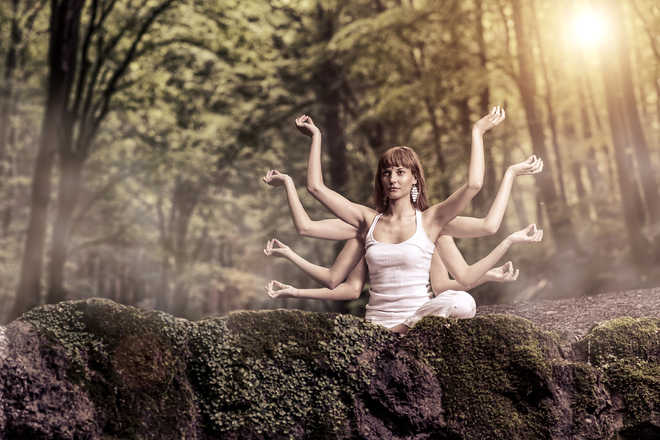Hasta Mudras Activating pancha-prana
DR Satish K Kapoor
Hasta mudras or hand-gestures speak with eloquent silence, and are used in art, religion, culture, yoga, meditation and personal life, consciously or unconsciously. Each finger of hand represents an element of nature and has a subtle energy-field. The thumb is symbolic of fire, index finger of air, middle finger of space; ring finger, of the earth, and little finger, of water. In Tantric anatomy, the thumb is associated with the solar plexus-chakra, index finger with heart-chakra, middle finger with throat-chakra, ring finger with root-chakra, and little finger with sacral chakra. By bringing the thumb in touch with one or more fingers, one can deepen one’s connection with the elements represented by them, and invigorate prana.
Prana is the universal life-force that manifests as breath in the human body. It has five categories to it: prana, apana, samana, udana and vyana. According to the Gheranda Samhita (V. 61-62): ‘The prana always moves in the heart, the apana in the sphere of the anus; the samana in the region of the navel; the udana in the throat; and the vyana pervades the whole body.’ Each is associated with a hand gesture that can regulate and energize its specific functioning.
Prana mudra
Prana mudra stands for vigour, self assertion and survival. It is performed by joining the tips of ring and little fingers with the tip of thumb while keeping the index and middle fingers straight. It impacts breathing, body temperature, heart-rate, sensory functions, thought, behavior and consciousness.
Apana mudra
Apana mudra symbolises patience, movement and flow. It regulates the downward-moving energy and eliminates toxins and waste products from the body. It is performed by bringing index finger to the base of thumb, joining ring and middle fingers with the tip of thumb, and keeping little finger straight. Alternately, middle and ring fingers are made to touch the tip of thumb while index and little fingers are kept straight. Due to its therapeutic effect on the heart and the colon, it is called Mrita-sanjivani mudra, the hand-gesture that gives life to the dead.
Samana mudra
Samana mudra is symbolic of balance, harmony, and understanding. It is performed by joining the tips of all fingers with the tip of thumb. As samana vayu pervades the alimentary tract, this mudra helps in the processes of ingestion, digestion, absorption and assimilation of nutrients by stoking jatharagni, gastric fire, and releasing natural acids and enzymes. It stabilizes tridosha, three fundamental body-substances —vata, pitta and kapha — in the body, and improves the functioning of liver, gallbladder, pancreas, and small intestine.
Udana mudra
Udana mudra symbolises creativity, imagination and communication. It regulates energy that ascends from the navel to the heart, throat and the head. It is performed by joining the tip of index, middle and ring fingers with the tip of thumb while keeping little finger straight. It supports the central and the peripheral nervous systems. It improves metabolism, speech and concentration, and is useful in the awakening of kundalini, coiled-up energy.
Vyana mudra
Vyana mudra is symbolic of circulation, transmission, and activity. It is performed by joining index and middle fingers with the tip of thumb while ring and little fingers remain straight. It ensures the proper circulation of blood and tones up the heart, lungs, skin, bones, veins, muscles and nerves.
To bring the energy systems of the body into harmonious balance, Hasta-mudras should be practiced daily while sitting with closed eyes, using both hands, for at least 20-25 minutes. One can perform a single mudra at one time, or build one’s own sequence of mudras for practice, as per need.
( Dr Kapoor is a noted educationist, historian and spiritualist.)









